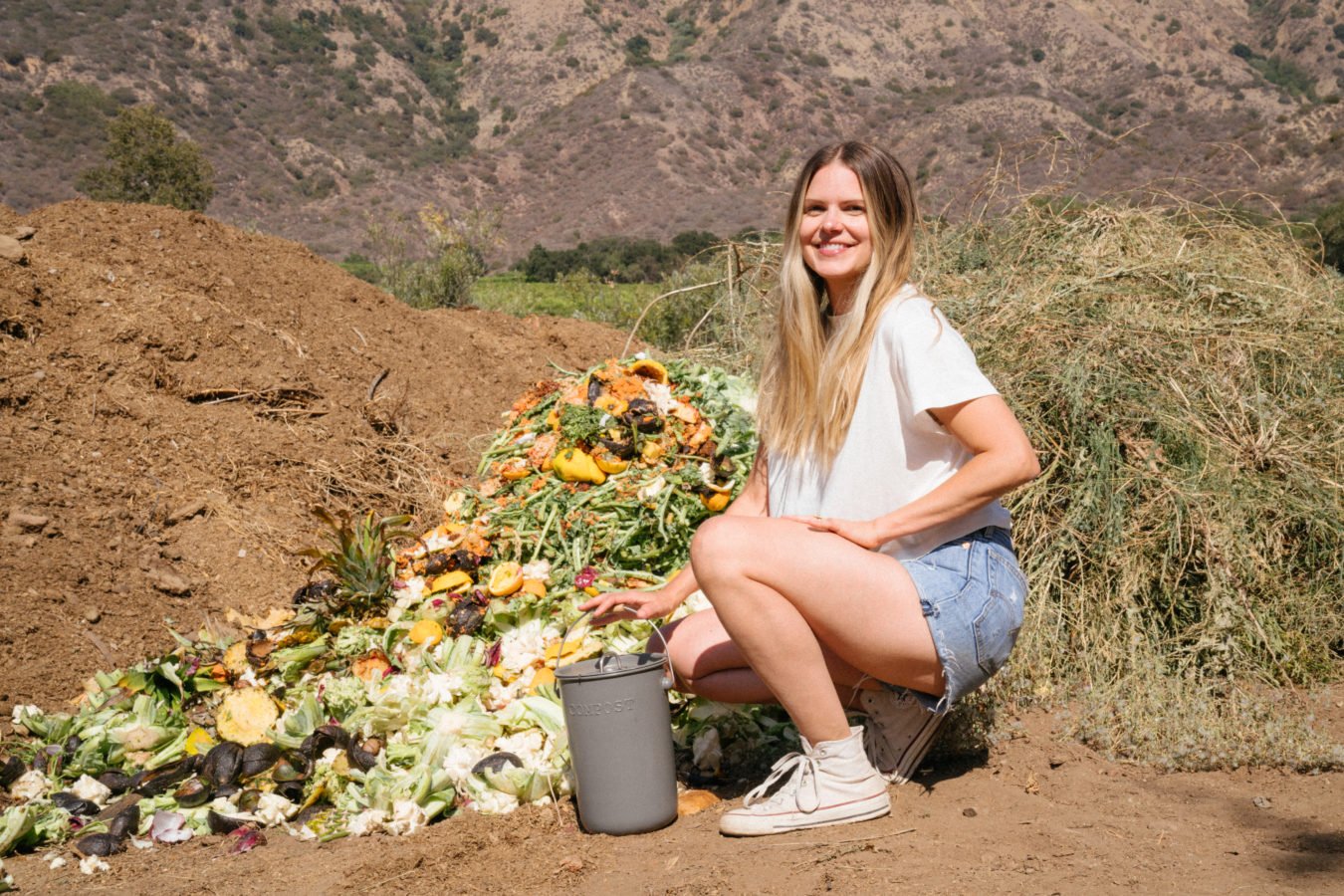Common Questions Answered For Learning To Compost Like A Pro

Share This Article
From choosing bins to deciding on what waste to use, here are the top composting tips.
| All products featured on The Wellness Feed are independently selected by our editors for their environmental and ethical impact. However, when you buy something through our retail links, we may earn an affiliate commission. |
If you’re looking for ways to minimize food waste, nourish your garden or house plants, and live a more zero-waste lifestyle, starting a compost bin is a way to knock out all three. With the average household estimated to waste 31.9% of its food, compiling all of those food scraps into waste that decomposes and is used is a greener alternative to allowing food to rot in landfills. Composting is a way to turn your kitchen scraps into nourished soil that you can reuse for your garden or the plants around your house. If you’re a newbie wondering how to compost, know it’s a simple process that doesn’t require many resources or time. And, once you start, it’ll be so easy that you’ll wonder why you didn’t do it sooner.

What do you need to begin composting?
The first thing you’ll need is a bin to store food scraps in, and there are multiple options to choose from. Here are the types of bins you’ll encounter:
Compost Kits: These come fully stocked with items like soil, a small shovel (if you’re turning the waste yourself), and maybe even a pack of wood chips.
Plastic Storage Containers: These are the best if you’re a beginner. They require few resources up front (you might already have one lying around unused in your closet), and you can choose the size that’s best for your lifestyle. You’ll want to make sure that it has a secure lid. If you choose a plastic storage container, you’ll need to drill holes into the sides and the lid for circulation.
Bamboo/ Wood / Steel Compost Bins: If you’re avoiding plastic, you can learn how to compost using a container made from renewable or recyclable materials like bamboo, wood, or steel.
Food Scraps: Once you’ve chosen how to store your food scraps, you can begin collecting the most important part- the scraps you’ll compost. Collect vegetable and fruit scraps, coffee grounds, eggshells, and grass clippings as your ‘green waste.’ Next, use shredded newspaper, dried leaves, and bark chips as your ‘brown waste.’ It’s generally recommended you add 3-parts ‘brown waste’ to 1 part ‘green waste.’
You’ll also need soil. Use garden soil to begin your compost. Then layer with straw or dried leaves and add your compost last in layers. Here is a good beginner’s guide about how to layer your compost.
The last part of your compost kit is worms. Worms help to speed up the decomposing process by aerating the organic waste.

Where Do You Get Worms From?
Did you know that you can find professional worm breeders? And there are a lot of different suppliers online to choose from. If you’d like to save on postage, visit your local nursery or garden and lawn supply store to see if they sell worms that are ideal for composting.
If you’re looking to go out into the woods yourself to find a couple of worms for your compost, you might want to brush on the difference between earthworms and nightcrawlers first.

Can you compost without worms?
The answer is ‘yes.’ You don’t need to spend time feeding and maintaining the home of hundreds of worms just for composting to work. Compost outdoors if you’re not relying on worms. This allows for better circulation and more oxygen through the organic waste.
Like regular compost, you’ll still need a combination of food scraps or items, like grass clippings for nitrogen and wood shavings, ashes, potting soil, and shredded paper that will provide carbon. Remember, as a rule of thumb, you’ll want to make sure that you maintain a ratio of 3 parts carbon waste to 1 part nitrogen waste.
Turn the compost pile at least once weekly to allow oxygen to reach all areas. You’ll know when it’s ready due to its dark color and fine texture. But you might have to shift out larger pieces that haven’t fully broken down before use.

Can you compost in winter?
If you have a compost bin you keep outdoors, the freeze-and-thaw cycle will help with decomposition. Just be aware that food waste will decompose a lot slower with the colder temperatures. Another benefit of the freezing weather is that you won’t have to worry about adding leaves as often.
If you’re composting indoors, the change in seasons won’t play an important role. Composting during winter indoors will give you a head start on creating nutritious compost for your spring garden.

Can you compost indoors?
As long as your home is between 40 to 80 degrees, you can compost indoors. Place a bin in a dark and dry room like your basement, closet, or a corner on your kitchen counter.
